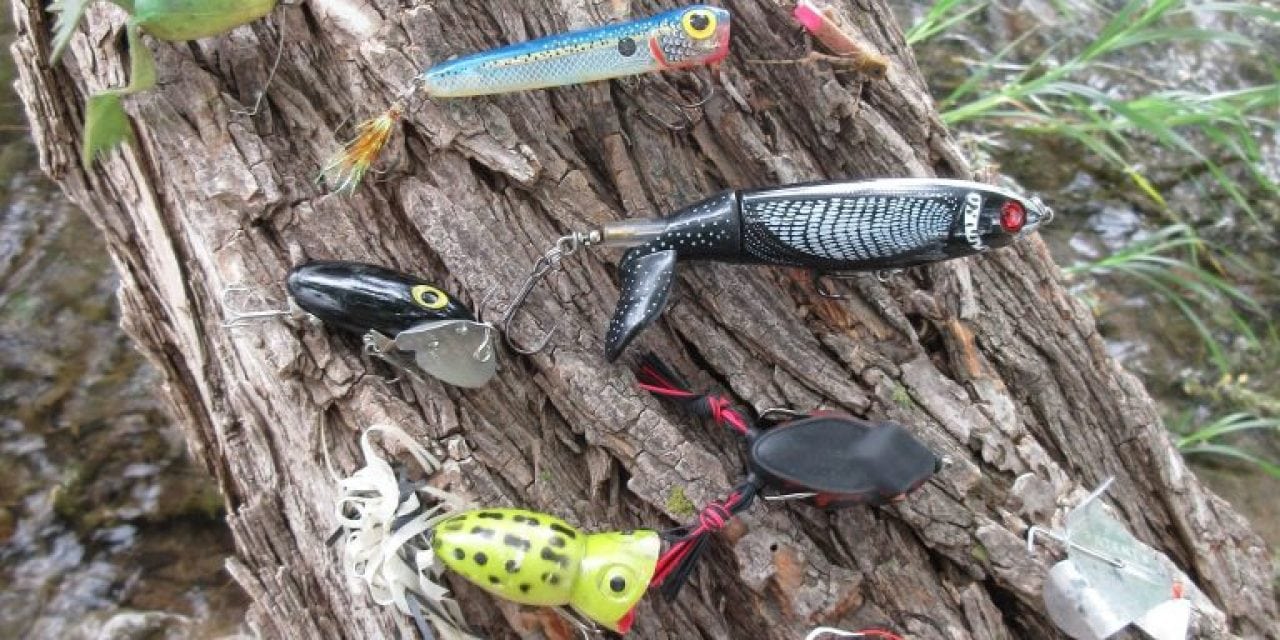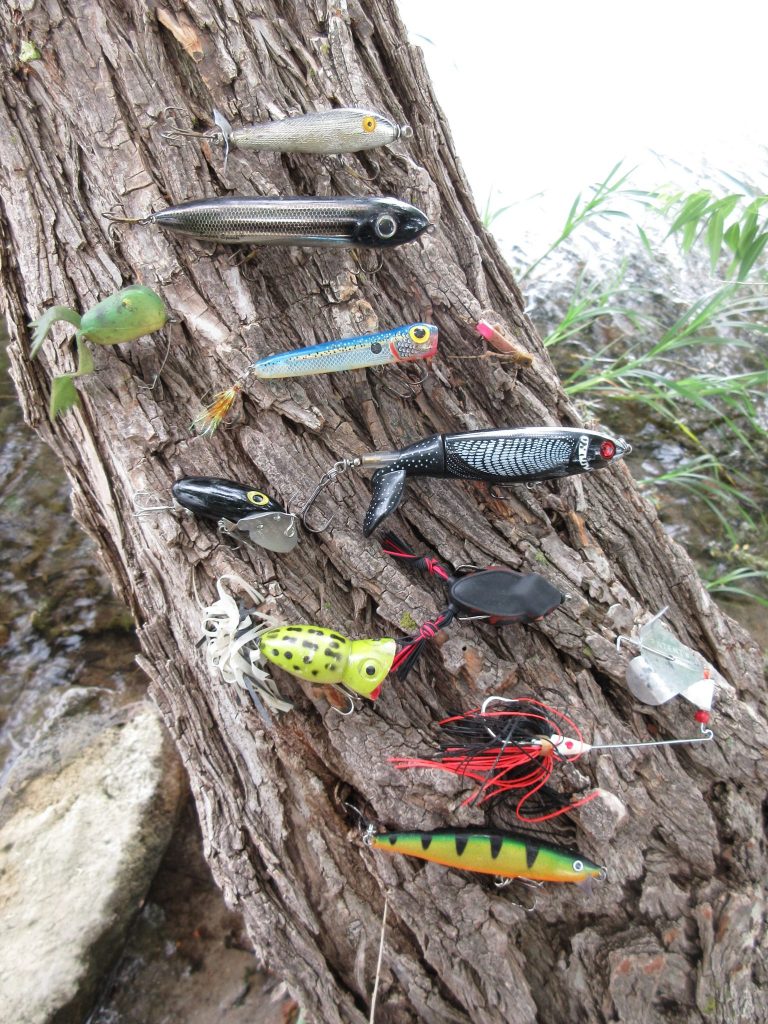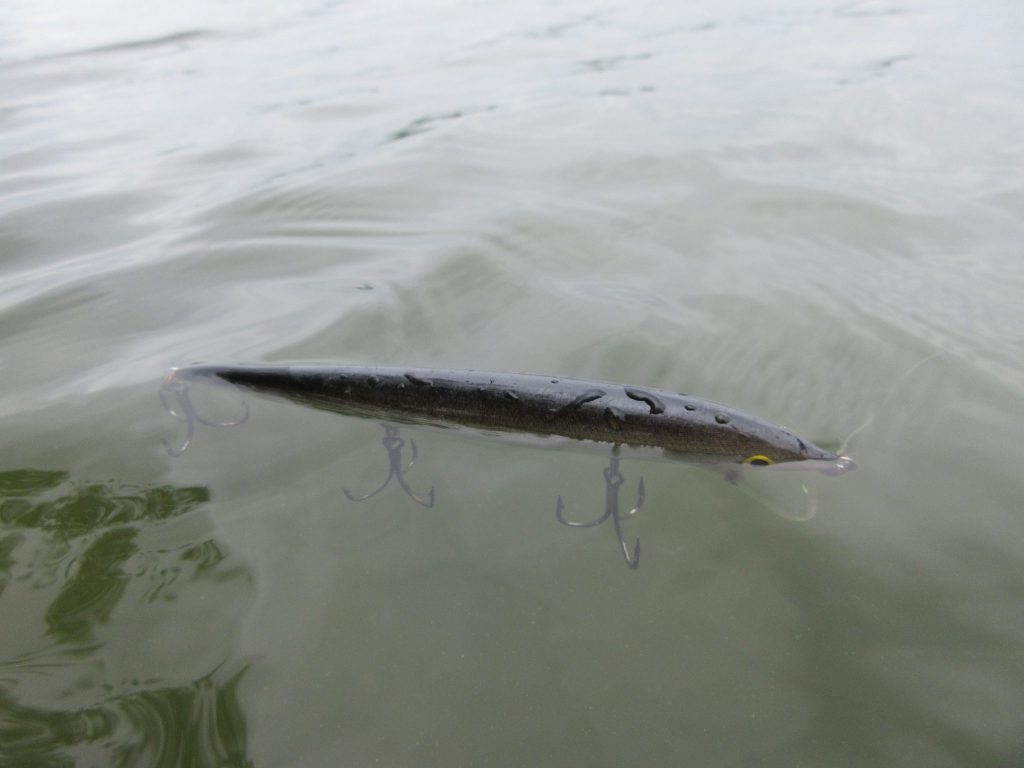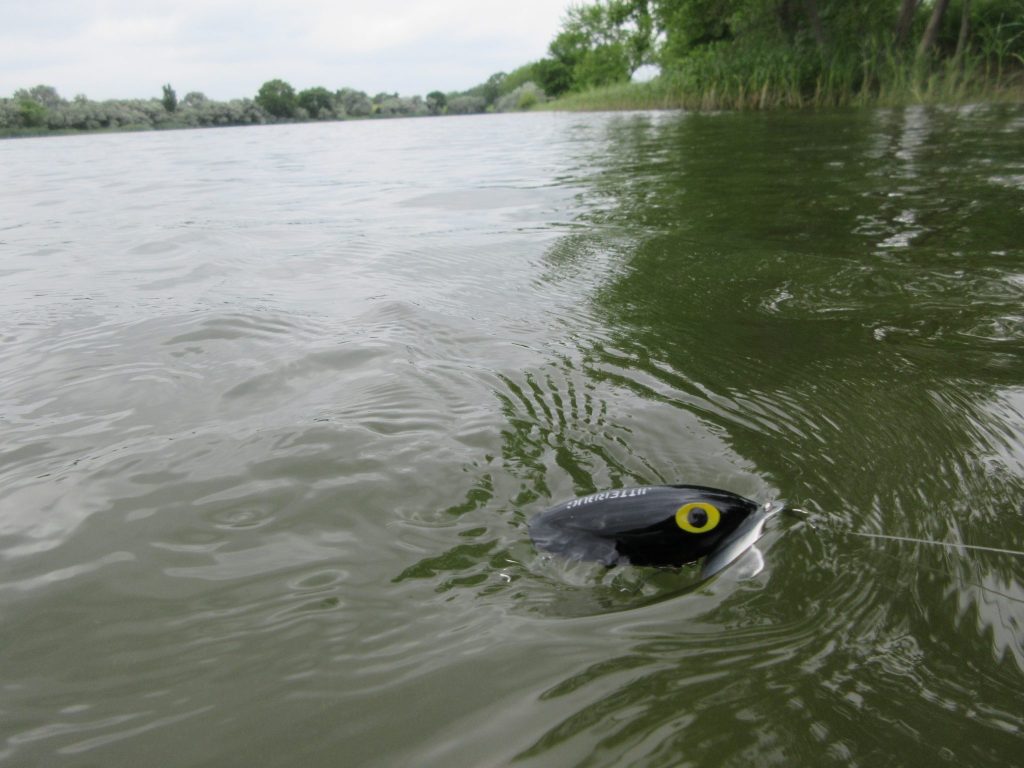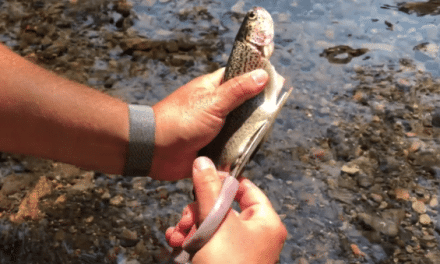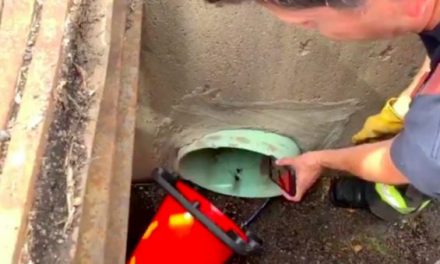I used to think that top-water baits were a specialized fishing presentation appropriately used ONLY under the best of conditions: A warm, calm, sunrise with a few wisps of steam rising off the water? Sure, there is nothing funner than catching a fish on a top-water bait, but my thinking was that there were usually better ways to catch more and bigger fish. Throw a top-water bait first thing in the morning and maybe you could get a surface strike or two before the sun rose higher, but don’t waste too much time before switching to some more effective subsurface presentation.
Over the years I have changed my thinking about top-water baits. They ain’t just a novelty bait! In some situations, maybe many situations, they absolutely are the best presentation for catching the most and biggest fish. And you know what? The “dog days” of summer are the best time to be throwing ’em!
What changed my mind? Well, success of course, but an understanding of predator/prey dynamics below the surface points to the surface. What? What kind of double-speak did I just scribble? If you have spent much time on the water, you know how important edges can be, edges where different habitats meet, edges where deep water meets shallow water, current edges, mud-line edges, etc., etc. All kinds of fish and wildlife are naturally drawn to edges. Below the surface of the water, predator fish, those big sport fish we love to catch, hunt along edges because of the abundance of prey in those areas, AND in many cases the predators use edges to their advantage by chasing and trapping prey up against an edge.
Guess what edge is over every fish?
Guess what edge many of those fish take advantage of when finding and capturing prey?
You got it, on top, the top edge, the surface of the water.
Voila, that is why top-water baits should be a significant portion of your tackle box. Of course every bass angler knows this, and so do the folks who chase big toothies. Open-water predators like white bass and wipers often tear it up on the surface too. Panfish? You bet. Trout, “Duh”, of course! Even species like walleyes and catfish use that surface edge more often than you think. No, I am not suggesting that you fish top-water baits when targeting walleyes and catfish, but I am telling you that those species have been and can be caught on top-water baits because they are predators and they utilize the surface as an edge too!
Here is an example of a few of the top-water baits that ride around with me, and yes, all of them have caught fish:
When I started pulling top-water baits out of my 100-pound tackle box, I was again reminded how they are all nothing but tools. They all will catch fish when used in the right place at the right time; the trick is using the right tool for the job. Those baits pictured above are all fished on the surface, but they are all different and perform a different job.
Sure, imitation of some prey item is the idea, but even more fundamental is how fast can those baits be fished on the surface? Some of those surface baits are made to be fished slow, some fished relatively fast. Depth and speed are always the two most important variables to consider when working through the puzzle of which may be the best bait at any given time. The depth of top-water baits is easy, the surface, so speed is the most important variable.
Another major difference in surface baits is how weedless they may be. Some of the top-water baits in my tackle box are very weedless and in fact designed to be fished right in and over the thickest cover. Other baits, well, as you can see by multiple treble hooks hanging from the lures, they ain’t weedless at all.
I think you get the idea, top-water baits may be a category of artificial lures, but even within that category there are a variety of tools. In some situations, fast and loud will definitely be the best tool for the job. In other situations, slow and subtle will “Get-R-Done”. How do you pick? Well some times you might have to try both slow and fast and let the fish tell you. Always start with fast, you can cover a lot more water and figure things out quicker that way.
Let me make a few comments about the baits in my photo:
Color? Whatever. On the surface, fish are approaching a bait from below, looking up, and mostly they see silhouettes. Colors may seem to make some difference in some situations, but I never get hung up on colors. In fact, take a look, I favor blacks and dark colors for a lot of my top-water baits because those will have the most distinct silhouette.
Fly-fishers, I threw a foam hopper into the portrait, but you know that fishing surface baits, dry flies, is a huge part of fly-fishing. There is so much more than foam hoppers, but in the photo you would not have been able to see the size 20 Trico-imitating dries we were catching trout on late last summer. When fly-fishing, especially for selectively-feeding trout, matching the “hatch” is the name of the game! However, keep in mind that “matching the hatch” involves more than just imitating the prey item the fish are sipping, it also includes imitating the behavior of that prey item on the water. In most cases, drag-free drifts are critical, and sometimes those drifts will have to be in exactly the right current seam at the right time.
Old school still works!!! There is a Jitterbug and a Hula Popper in the photo for a reason! (Foreshadowing: More on that later)
Come to think of it, some of those other baits have been around for awhile too, Zara Spook, Bill Plummer Super Frog, a Rebel prop bait.
Look towards the bottom and you will see a Flat Rap. Now that bait is not specifically a surface bait, but it floats, and I have caught a darned lot of fish twitching a Rapala on the surface. Have caught a lot of walleyes, and some big walleyes, wobbling a Rapala right on the surface.
Oh, wanna talk “old school” some more? That Rapala in the water is a #13 Husky Rapala, a bait just a little bit beefier than the standard Rapala. No, not a Husky Jerk, a Husky Rapala. Loved those baits because they had a bigger profile and they cast better, but like many mass-marketing programs, apparently there weren’t enough of us snatching #13 Husky Rapalas off the shelf, and they quit making them. Never fear, I hoarded a bunch. I ain’t telling you where they are, but they are under lock and key, armed guards.
Yes, prime times when fish are most likely to be feeding are the best times to fish top-water baits. Yes, dawn and dusk are good times, BUT they ain’t the only times! Do not be afraid to try the top edge any time of day, especially during the summer. I have caught fish on top-water baits in the spring and well into the fall too, but summer is certainly the best.
Less wind is usually best for fishing top-waters, but again do not be afraid to try it with some waves on the water. Obviously, the more subtle, slower surface baits are least effective when the wind starts blowing, but even then you might find calm pockets where those baits will still work. With surface baits that make the most commotion, absolutely give ’em a try in the waves; however, do not be surprised if you have more fish that strike and miss the bait as the wind picks up.
Also yes, when you know fish are active and feeding it is a great time to throw a top-water; duh, when there is a surface feeding frenzy get a bait in there! However, I have come to the conclusion that even when there is no obvious feeding activity, surface baits may be your best option as a search bait. Tie a surface bait on and start covering water; the surface commotion may be more likely to attract a response than other subsurface presentations. The advantage of throwing a top-water bait to find fish is even if you do not hook them, at least when you get a reaction you can see it–you know fish are there.
Speaking of hooking fish. . . . There is nothing more fun than having fish take baits off the surface, and some of those takes will be violent attacks! However, that often results in a premature over-reaction from the jerk on the other end of the line! You know what I am talking about it, if you have had a fish blow up on a surface bait, you have done it–set the hook at the eruption of water and end up missing the fish. Oh, and yes, that often means a surface bait sailing through the air back at your melon. I know it is hard, but try to make yourself pause until you feel the fish before you set the hook. It is easier said than done, maybe lay off the coffee and energy drinks, but the better you can master the pause, the more fish you will hook up. Believe me, I have had big wipers knock surface baits a couple of feet into the air, two, three, four times, before they finally got the hooks; that was nerve-racking, but it sure was fun!
OK, now about the “foreshadowing” I mentioned. . . .
It was the middle of the day when I rummaged through my tackle box and pulled out the top-water baits for the picture in this blog. I also tied on a Jitterbug for a few action shots:
Of course I had it tied on, might as well make a few casts.
It took three.
This smallie crushed it about 5 feet from the bank:
Told you it worked!
EDITOR’S NOTE: Got a little too cute with the creative photos. Dropped my camera in the water. Don’t think it is going to recover. Oh well.
The post Top Edge appeared first on NEBRASKALand Magazine.


